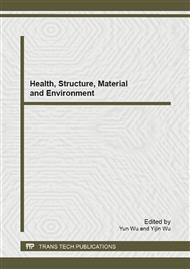p.753
p.759
p.763
p.768
p.773
p.777
p.783
p.789
p.795
Shangri-La County Ecological Risk Evaluation Based on RS and GIS
Abstract:
The world natural heritage Three Parallel Rivers core area Shangri-la County faced all kinds of ecological risk, and ecological risk assessment contributes to the ecological risk management. Have chosen the 10 main types landscape in the area as risk receptors, and ensured main risk source in the area to be forest fires, landslides and mudslides, urban construction, tourism, and the wood used for building and life, and have carried through the exposure and hazard analysis. Based on RS and GIS, first have calculated the landscape pattern index in the area, and then used landscape pattern index constructed landscape loss index as the ecological damage index. According proposed regional ecological risk assessment index system by this paper, and overlaid the influence distribution map of main risk source, and has obtained the comprehensive ecological risk value of every unit in combination with the calculation model. The ecological risk value were classified, eventually have obtained 1990 and 2006 spatial distribution of the ecological risk assessment in Shangri-la County. The results show that high-risk area distributes banding on Jinsha river downstream river valley area and Jaintang town area. Middle-risk areas distribute mainly on middle and lower reaches Jinsha river basin in Shangri-la County. Low-risk area distributes mainly inside middle-risk area that is main production area in Shangri-la County. Weak-risk area distributes mainly relatively high elevation area such as the snow and ice land and bare land, etc. The study can be applied to the similar type high canyon landscape risk assessment research.
Info:
Periodical:
Pages:
773-776
Citation:
Online since:
February 2013
Authors:
Keywords:
Price:
Сopyright:
© 2013 Trans Tech Publications Ltd. All Rights Reserved
Share:
Citation:


